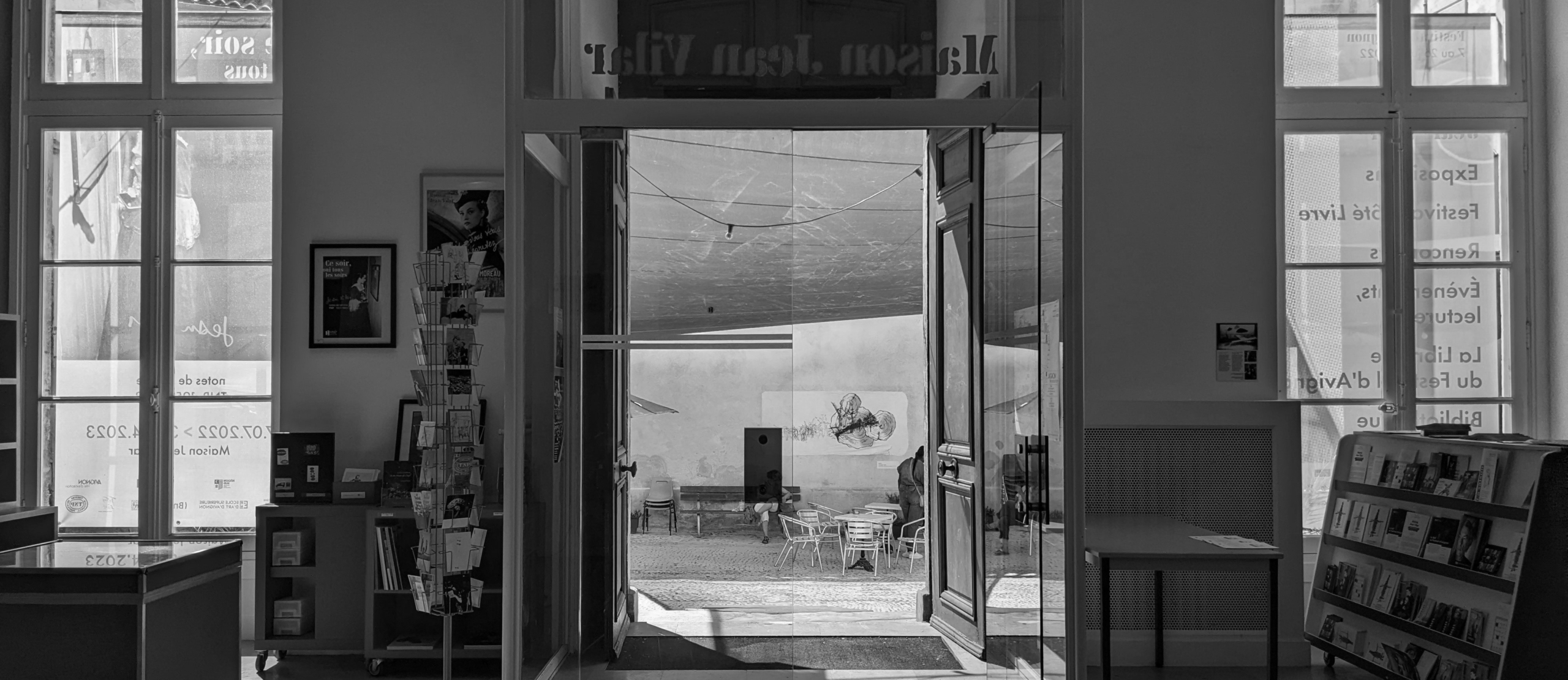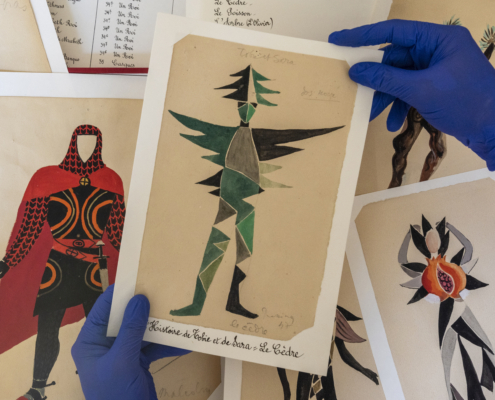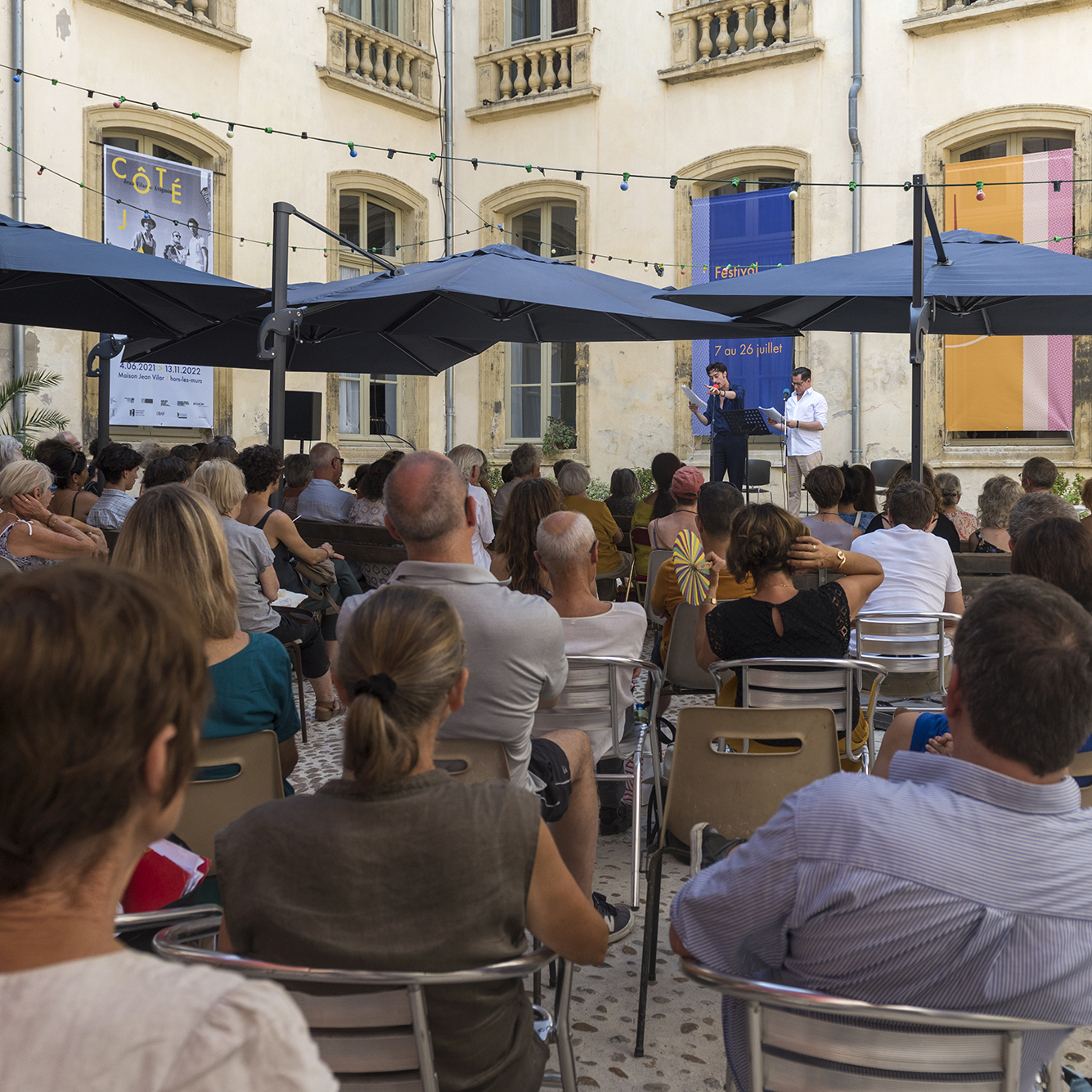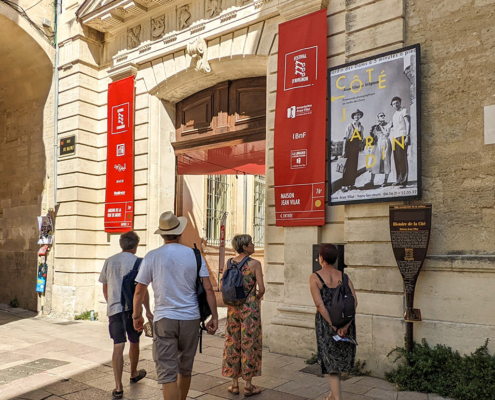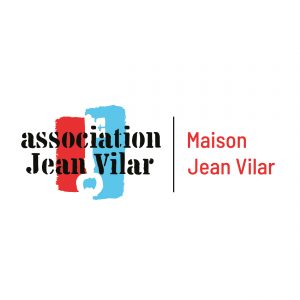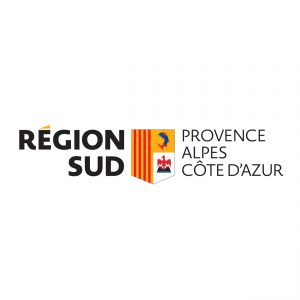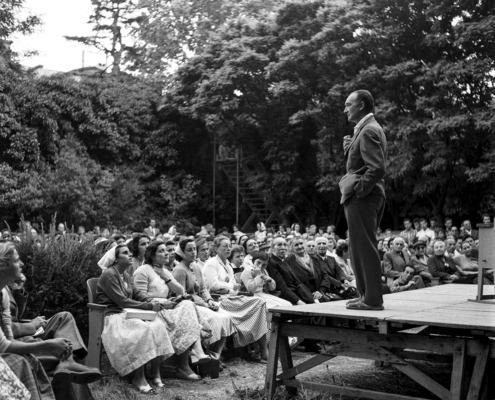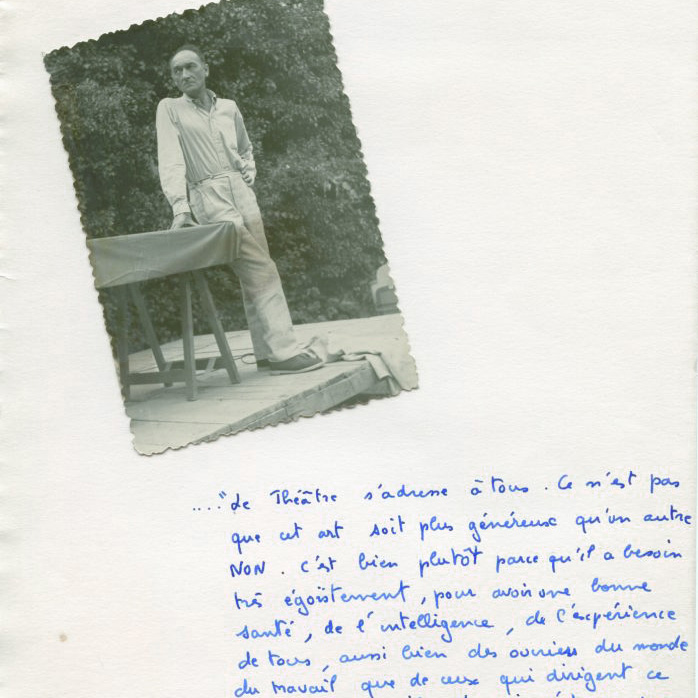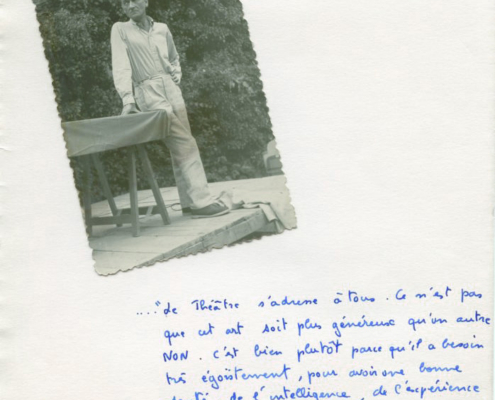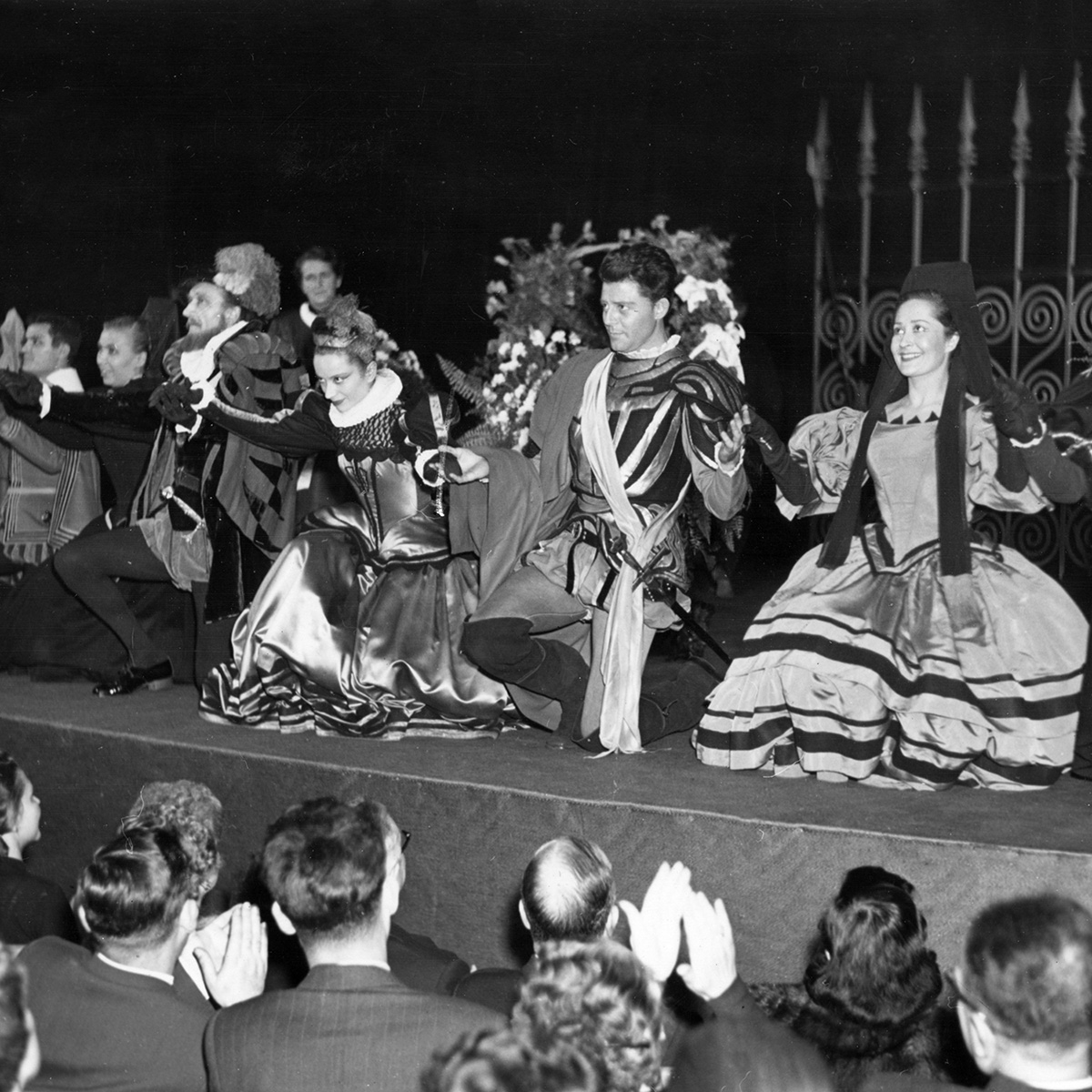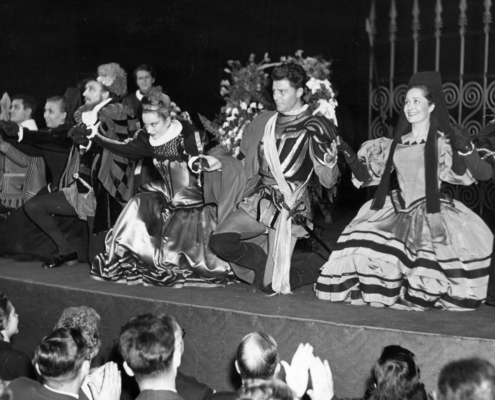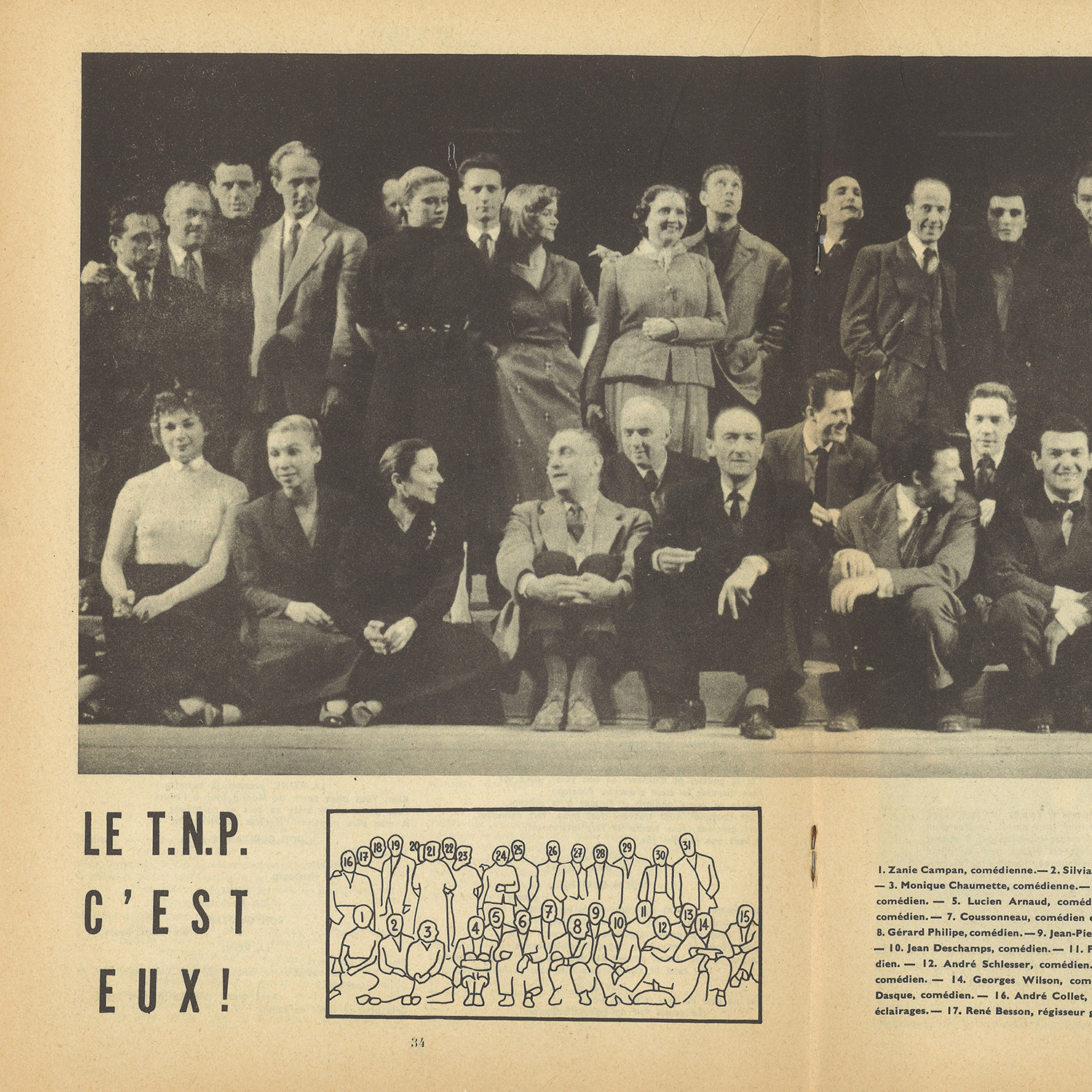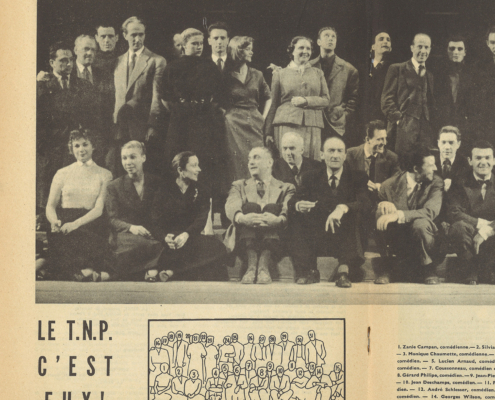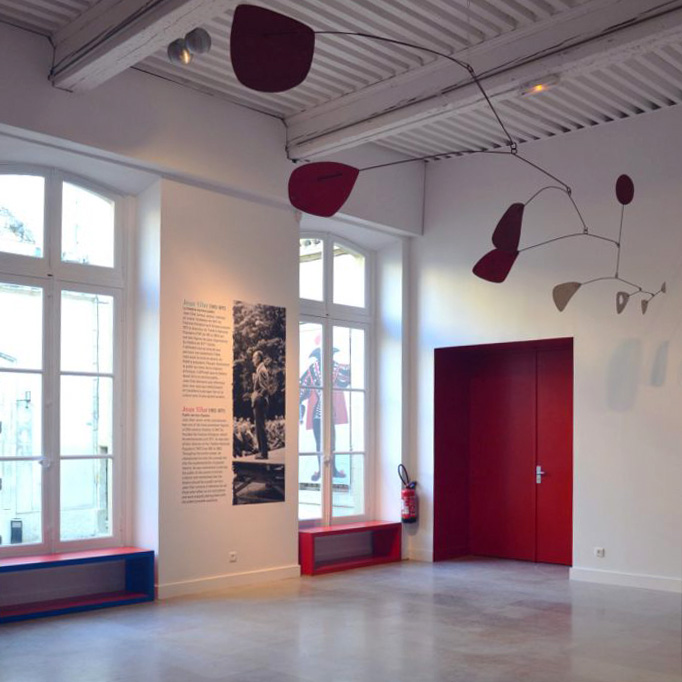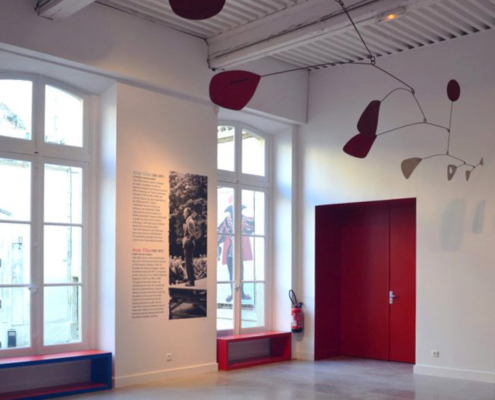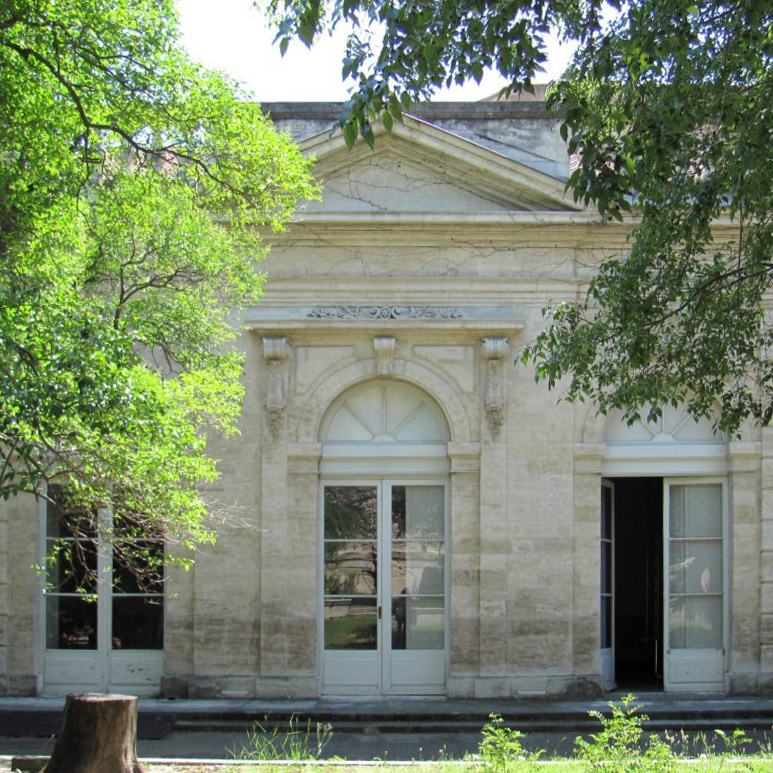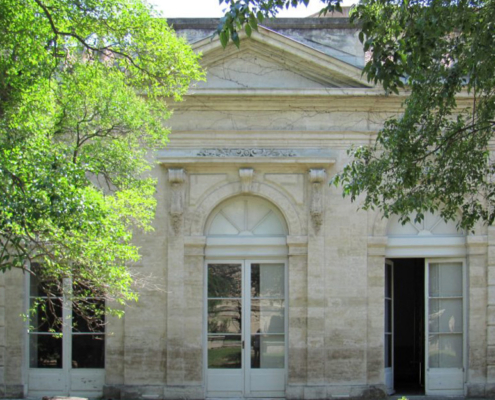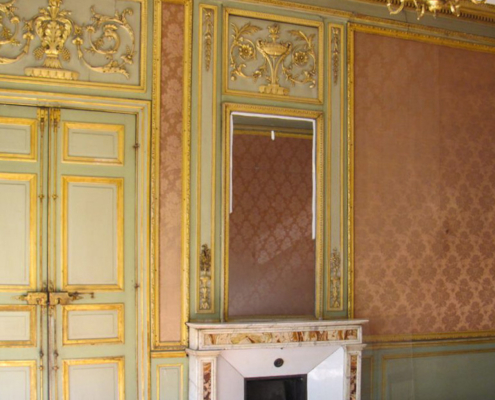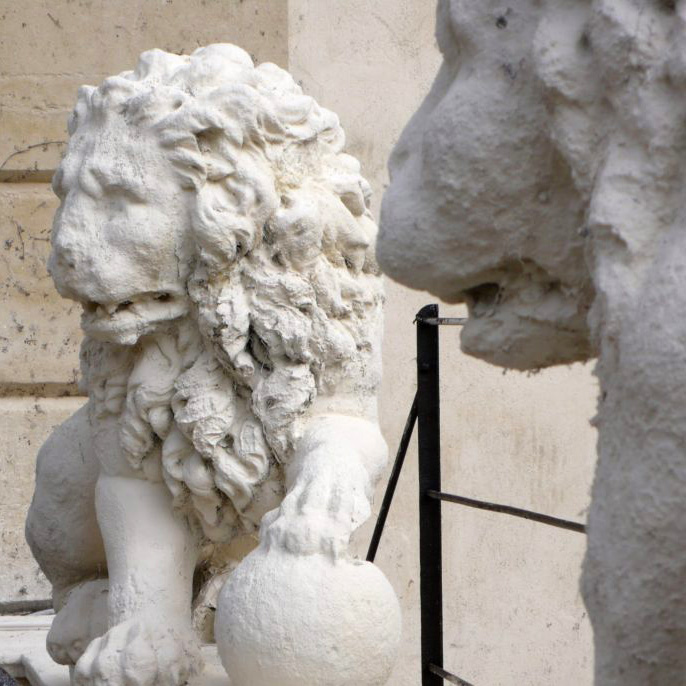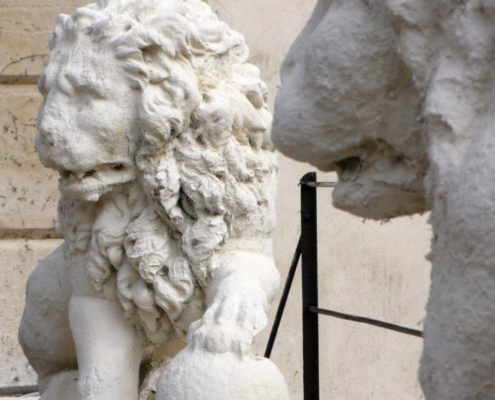The Maison Jean Vilar
Jean Vilar passed away in 1971. The necessity of assembling a corpus of documents quickly became apparent: records of his work, the Théâtre National Populaire during his directorship (1951-63) and everything connected with the Festival d’Avignon which he created in 1947.
In 1972, on the initiative of Paul Puaux, his closest collaborator and successor as director of the Festival d’Avignon (1971-79), the Association Jean Vilar was set up and was granted official status as a public interest organisation (allowing it to receive donations and funding).
The Association, the Bibliothèque Nationale de France (BNF or French National Library), the Ministry of Culture and the city of Avignon met and agreed on the need to establish a centre dedicated to Jean Vilar and the study of contemporary performing arts.
When the city of Avignon acquired the Hôtel de Crochans, in 1979, the Maison Jean Vilar became a venue for exhibitions, archives and research as well as a place for meetings and events, in keeping with the spirit of a people’s theatre today. This project joins in a quadripartite agreement between the City of Avignon, the Ministry of Culture, the Bibliothèque Nationale de France and the Jean Vilar association.
Pour en savoir plus :
- A place of remembrance: to promote interest in the work of Jean Vilar and popular theatre
- A resource centre allowing both professionals and the general public access to the collections and works: iconographic and audiovisual documents, performance archives, the cultural life of the region, Jean Vilar’s decentralisation initiative and the history of the Festival d’Avignon.
- A vibrant place: a year-round programme of exhibitions, events and meetings, culminating in the Festival d’Avignon.
Jean Vilar
A theatre for all: a lifetime goal
Jean Vilar, actor, writer and director, founder of the Festival d’Avignon and artistic director of the Théâtre national Populaire was one of the most prominent figures of 20th century theatre.
Throughout his entire career, he not only championed the concept of popular theatre, he also put it into practice. He was committed to placing the public at the centre of artistic creation and maintained that the theatre should be a public service.
The performances he staged at the Théâtre National Populaire, in Avignon and while on tour, attracted almost 5 million spectators!
Jean Vilar is still a reference for all those who think about and work towards sharing art and culture with the greatest number of people.
Timeline
25th March 1912 – birth in Sète
1932 – moment of epiphany while attending a rehearsal of Richard III at Charles Dullin’s Théâtre de l’Atelier.
1941 – meeting with André Clavé who invites him to join his troupe, La Roulotte.
1943 – creation of his troupe La Compagnie des Sept
1945 – staging of T.S. Eliot’s Murder in the Cathedral at the Théâtre du Vieux Colombier. This was his first big success.
4th-10th September 1947 – Three new productions at the Semaine d’Art Dramatique (Dramatic Arts week) in Avignon.
August 1951 – Appointed as Director of the Théâtre National Populaire.
November 1951 – first performances by the TNP: Le Cid (Corneille) and creation of Mother Courage (Brecht).
1954 – The Semaine d’Art Dramatique (Dramatic Arts week) becomes the Festival d’Avignon.
November 1959 – Première of Le Crapeau-Buffle (Gatti) at the new Théâtre Récamier, an annex of the TNP used exclusively for staging original texts by contemporary playwrights.
1963 – Vilar refuses the renewal of his contract as director of the TNP.
July 1964 – first Rencontres d’Avignon (Avignon symposium), on the theme of “Cultural Development”
28th May 1971 – Death of Jean Vilar in Sète. Burial in the maritime cemetery.
The Hôtel de Crochans
An exceptional place
L’Hôtel de Crochans owes its name to the elder son of the Guyon family, the lord of Crochans. In 1671, he bought up the main dwelling that had been designed by Cardinal Pierre des Prés as early as 1330, in what is now rue Mons.
The new owner, a high-ranking officer in Louis XIV’s Royal Army, transformed the original palace into a private hotel whose architecture is typical of classical 17th Century buildings.
Located between the Place de l’Horloge and the Palais des Papes, the site has kept all the elegance of its original historical features. As early as 1972, both façades – overlooking the garden and the inner courtyard, the calade (a typical Provençal courtyard with cobblestones laid sideways, in lines), and the portal (drawn by the architect Pierre Mignard II) were all classified as Historical Monuments. Three 18th Century reception rooms were also included: the pink salon, the green salon and the salon de la Mouette.
The City of Avignon acquired the building in 1974 to accommodate the future Maison Jean Vilar, which took up residence there in 1979.
The entrance hall, entirely renovated in 2018, now accommodates a mobile created by Calder that was part of the set for Nucléa, a play by Henry Pichette directed by Jean Vilar in 1952.


